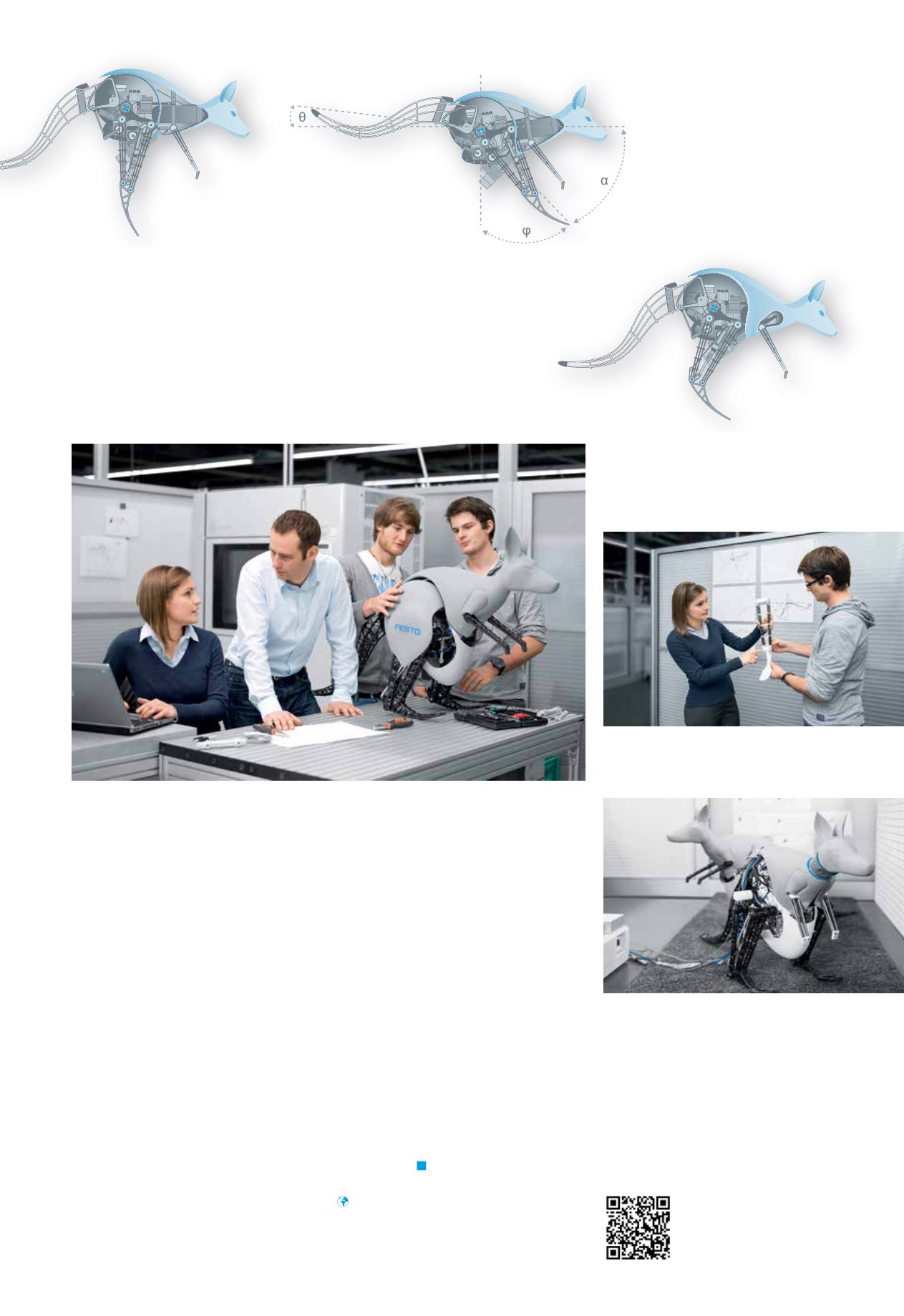
4.
Evaluationof thesensor values
by the control system
5.
Pulling the legs forward
and lifting the tail
6.
Landingandpreparing
for thenext jump
highpressurestoragedevices. In
collaborationwithvarious research
departmentsatUlmUniversity, the
kinematics couldbe controlled insucha
way that theBionicKangaroo can jump
steadily, landperfectlyand takeoff again
inaflawless, fluidmovement.
Twostepsback, threesteps forward
“Abionicsproject has tobeextensively
redesignedmany timesbefore it canbe
presented to thepublic. Sometimesyou
have to take twostepsback inorder to
move threesteps forward,”explainsElias
Knubbenabout theuncertainty in
innovationprojects. Although the
deadlineseemed toapproach rapidly, the
projectwasstill completedon time. The
BionicKangaroomade itsfirst successful
seriesof jumpsshortlybefore the
Hannover Fair 2014. The condition
monitoringaswell as theprecise control
technologyensure the requiredstability
when jumpingand landing.
Theenergystatusof thekangaroo, the
manipulatedvariablesand tilt angleare
constantlymonitoredandevaluated.
Thanks to thekinematic systemmadeout
of laser sinteredparts reinforcedwith
carbon, theBionicKangarooweighs just
sevenkilogramsataheightof aroundone
metre. It can jumpup to40 centimetres
highandadistanceof up to80
centimetres.
Choiceofmaterials:
thekinematic system
ismadeout of laser sinteredparts reinforced
with carbon.
Teamwork:
thecomplexmechatronicdesignwasdeveloped
through interdisciplinarycollaboration.
The“umbilical cord”
that initiallysupplied
theenergy for the jumps couldbe cut thanks
to theuseof lightweight, compact compressors
andhighpressurestoragedevices.
Movingpictures:
Simplyscan theQR code
towatch thevideo.
Issue27
trends inautomation
Compass
14
–
15


